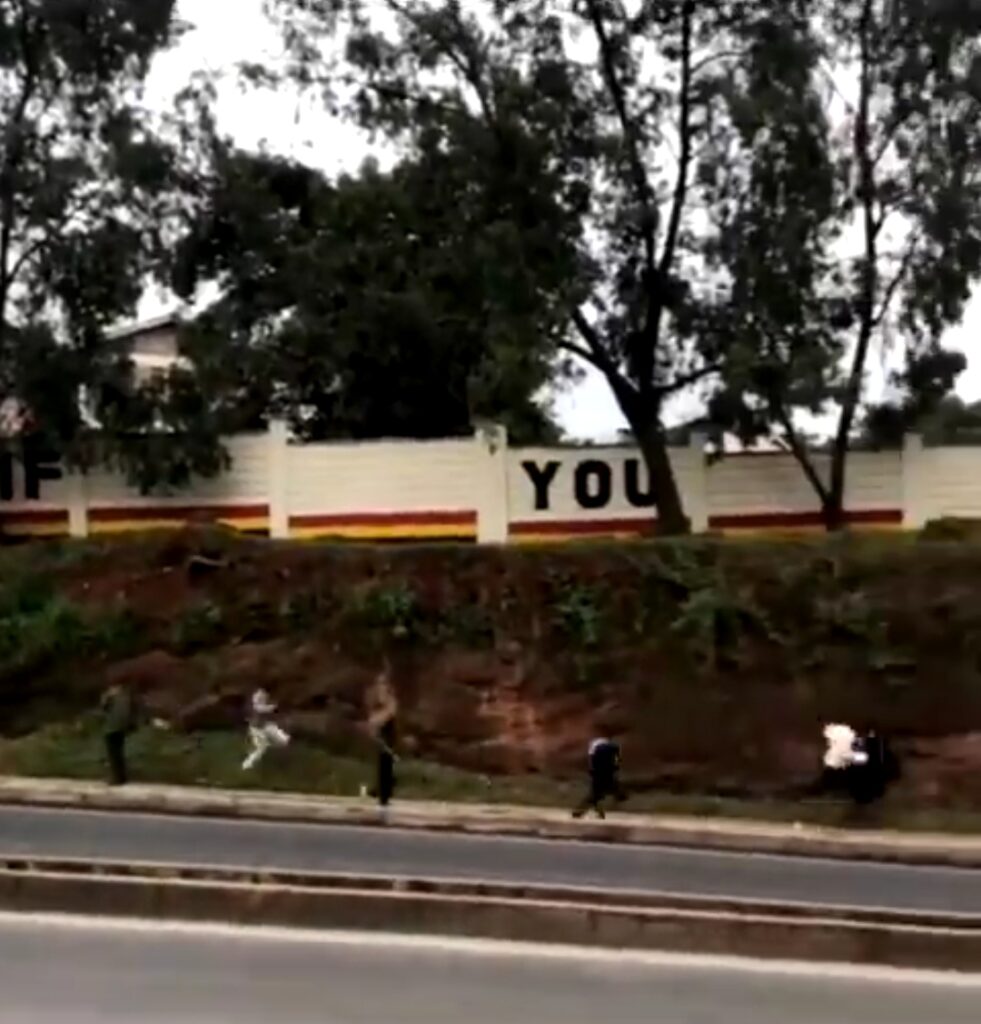Protests erupted in the heart of Nairobi’s Central Business District (CBD) as demonstrators gathered to voice their discontent. The crowd, driven by various grievances ranging from economic hardships to political discontent, assembled early in the morning.
Chanting slogans and carrying placards, the protesters aimed to march peacefully through the city’s core. However, the situation quickly escalated as police forces moved in to disperse the gathering.
The police, equipped with riot gear, formed a barricade to prevent the protesters from advancing further into the CBD.
Tensions mounted as the demonstrators attempted to push through the police lines. In response, officers began using tear gas and water cannons to scatter the crowd.
The air filled with the acrid smell of tear gas, causing many protesters to retreat while others remained defiant, shielding themselves with improvised masks and handkerchiefs.
Reports of gunfire soon emerged, with witnesses claiming that police fired live rounds to disperse the crowd. Panic ensued as the protesters scrambled for cover, seeking refuge in nearby buildings and alleys.
The sound of gunshots reverberated through the city streets, creating a chaotic and frightening atmosphere. Several individuals were seen lying on the ground, injured by the ensuing violence.
Amid the turmoil, several local businesses hurriedly shut their doors, and pedestrians caught in the fray sought safety wherever they could find it.
The normally bustling streets of Nairobi’s CBD became scenes of disorder, with overturned bins, scattered debris, and the remnants of hastily abandoned protests. Public transport ground to a halt, stranding many commuters.
Human rights organizations quickly condemned the police’s heavy-handed response, calling for restraint and the respect of the protesters’ right to assemble peacefully.
Social media platforms buzzed with real-time updates and videos, spreading the news of the unrest far and wide.
Hashtags calling for justice and accountability began trending, amplifying the call for international attention.
Medical personnel and volunteer medics set up makeshift first aid stations to treat those injured in the clashes.
The number of casualties remained uncertain, but several ambulances were seen rushing to and from the scene.
Hospitals in the vicinity braced for an influx of patients, preparing emergency wards for the injured.
Political leaders and activists urged calm, appealing to both the protesters and the police to avoid further violence. Some leaders called for dialogue, emphasizing the need to address the root causes of the unrest.
They highlighted the importance of listening to the grievances of the people and working towards meaningful solutions.
As the day wore on, the situation remained volatile, with sporadic skirmishes breaking out between small groups of protesters and police.
The authorities maintained a heavy presence in the CBD, determined to prevent the demonstrations from spreading. Helicopters hovered overhead, monitoring the situation from above.
International media outlets began covering the events in Nairobi, bringing global attention to the unfolding crisis.
Diplomatic missions issued advisories to their citizens in the city, warning them to avoid the CBD and stay indoors.
The government, meanwhile, faced mounting pressure to address the issues that had led to the protests and to ensure a peaceful resolution.
As dusk approached, the protesters began to disperse, with many vowing to return and continue their struggle.
The day’s events left a palpable tension in the air, a reminder of the deep-seated issues that remain unresolved.
The future of Nairobi’s CBD hung in the balance, with the hope that dialogue and reconciliation would prevail over further violence.


